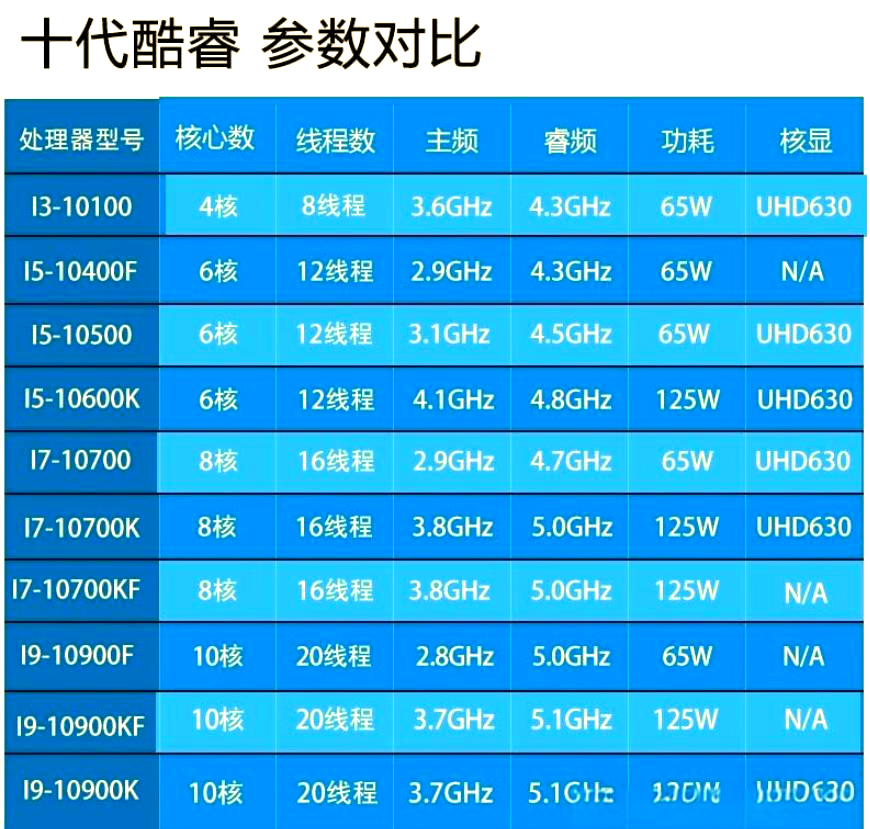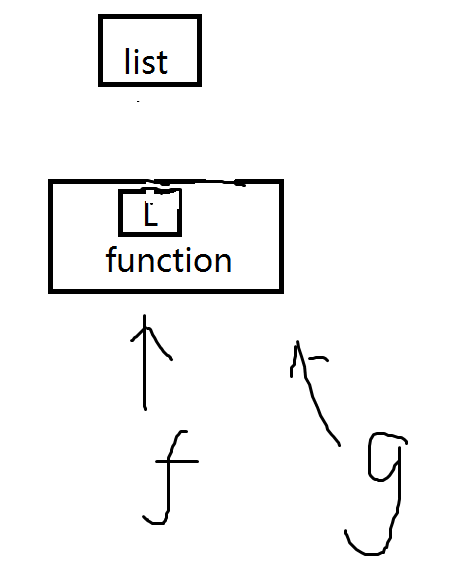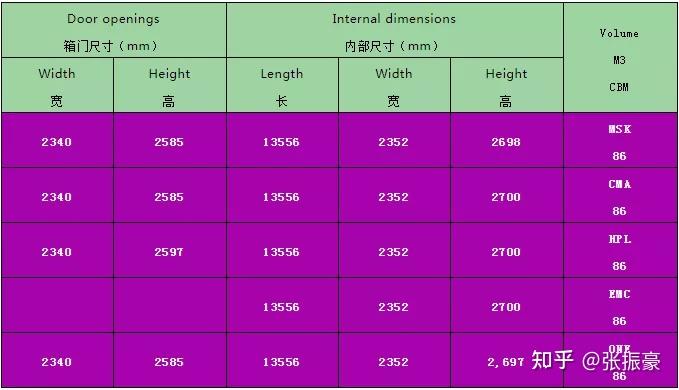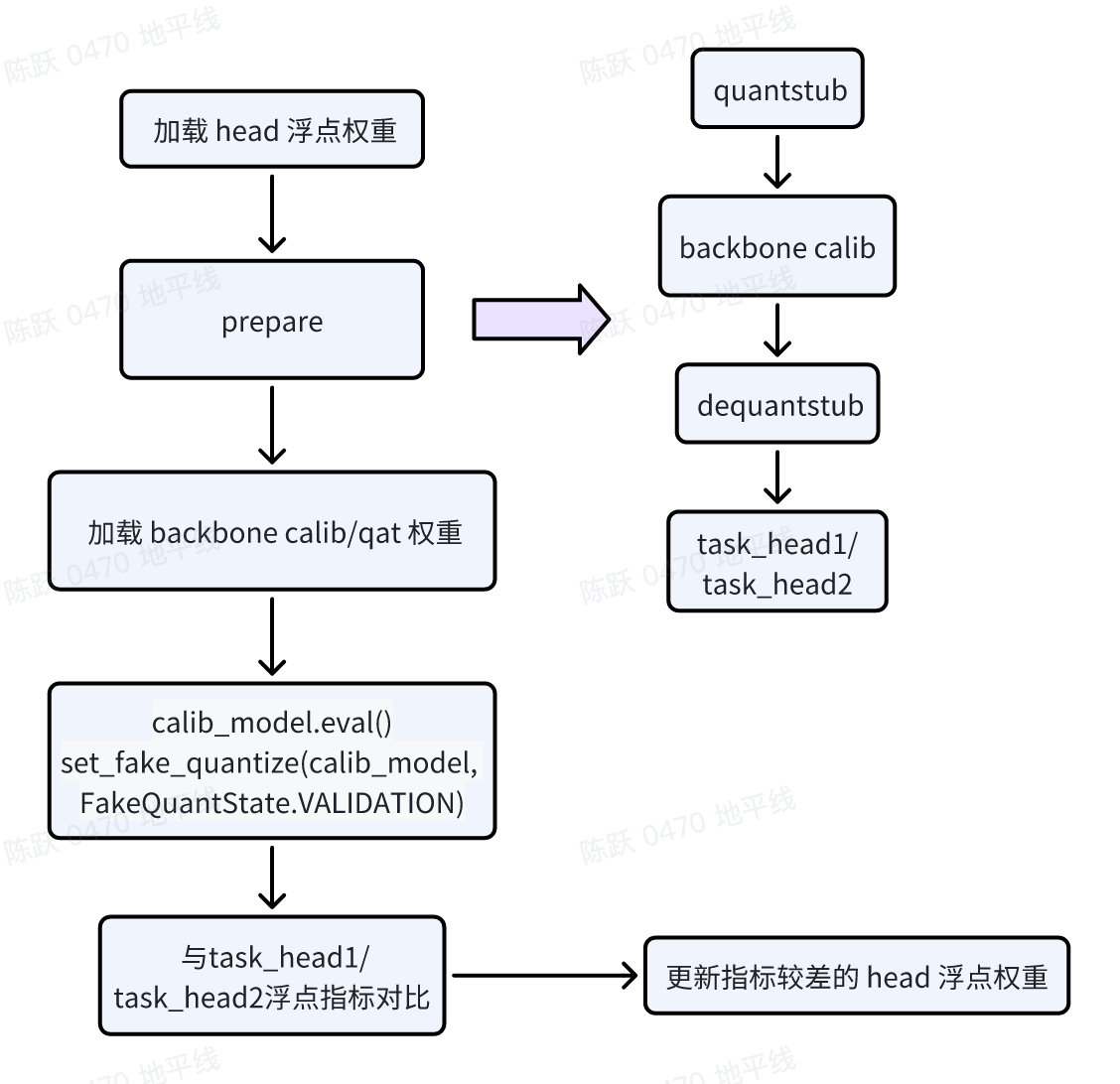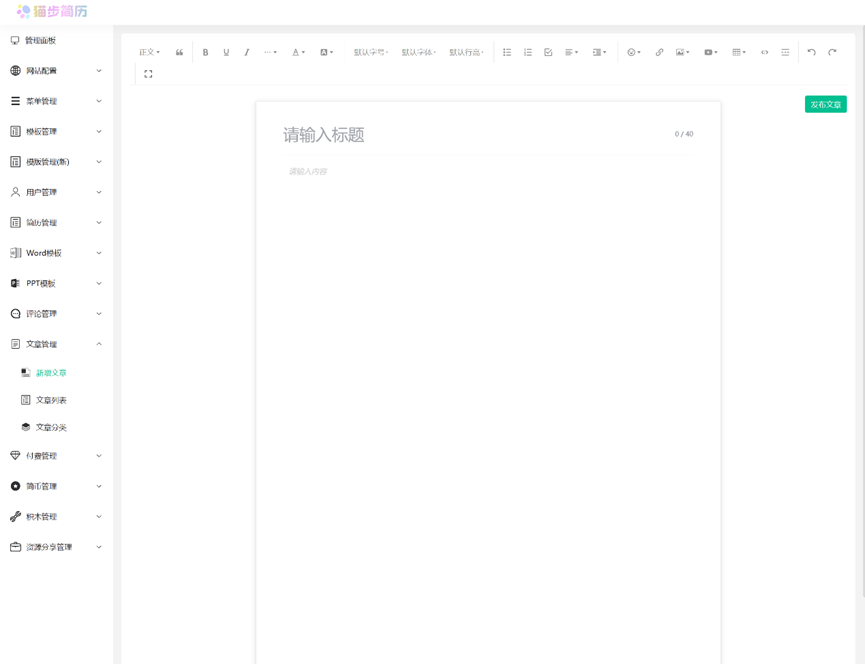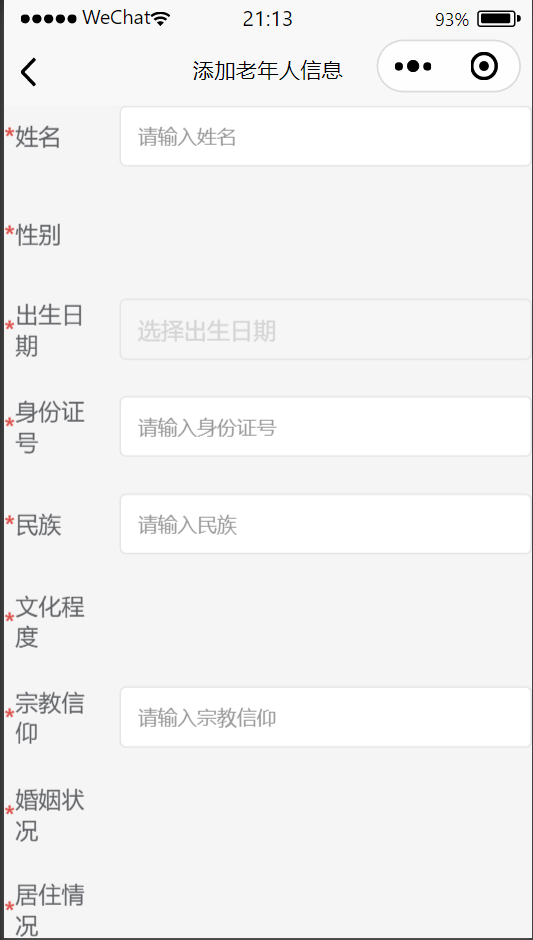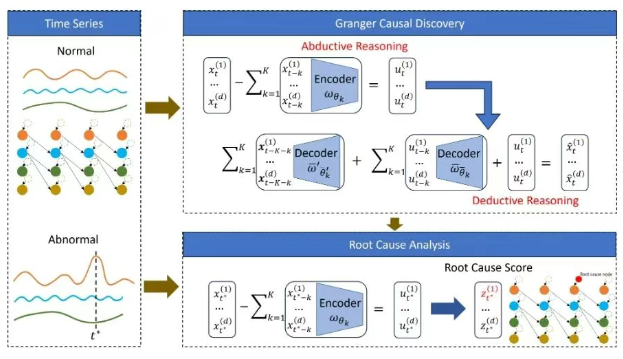MapStruct使用指南并结合Lombok
- https://juejin.cn/post/6956190395319451679#heading-1
- 2024-01-11 18:34:06
如何结合 lombok
也就说说如果代码中使用了 lombok 注解来生成代码,mapstruct 的 getter/setter 方法也使用了 lombok 的 api,那就需要额外的配置,因为这两个工具都是使用了编译时生成新的代码,所以需要在 maven 编译的时候指定一下.方案如下
介绍
随着微服务和分布式应用程序迅速占领开发领域,数据完整性和安全性比以往任何时候都更加重要。在这些松散耦合的系统之间,安全的通信渠道和有限的数据传输是最重要的。大多数时候,终端用户或服务不需要访问模型中的全部数据,而只需要访问某些特定的部分。
数据传输对象(Data Transfer Objects, DTO)经常被用于这些应用中。DTO 只是持有另一个对象中被请求的信息的对象。通常情况下,这些信息是有限的一部分。例如,在持久化层定义的实体和发往客户端的 DTO 之间经常会出现相互之间的转换。由于 DTO 是原始对象的反映,因此这些类之间的映射器在转换过程中扮演着关键角色。
这就是 MapStruct 解决的问题:手动创建 bean 映射器非常耗时。 但是该库可以自动生成 Bean 映射器类。
在本文中,我们将深入研究 MapStruct。
MapStruct
MapStruct 是一个开源的基于 Java 的代码生成器,用于创建实现 Java Bean 之间转换的扩展映射器。使用 MapStruct,我们只需要创建接口,而该库会通过注解在编译过程中自动创建具体的映射实现,大大减少了通常需要手工编写的样板代码的数量。
MapStruct 依赖
如果你使用 Maven 的话,可以通过引入依赖安装 MapStruct:
<dependencies><dependency><groupId>org.mapstruct</groupId><artifactId>mapstruct</artifactId><version>${org.mapstruct.version}</version></dependency>
</dependencies>
这个依赖项会导入 MapStruct 的核心注释。由于 MapStruct 在编译时工作,并且会集成到像 Maven 和 Gradle 这样的构建工具上,我们还必须在 <build 中/> 标签中添加一个插件 maven-compiler-plugin,并在其配置中添加 annotationProcessorPaths,该插件会在构建时生成对应的代码。
这个配置必须写在你要执行 mvn package 对应的 pom.xml 里面,然后执行 maven,使用 idea 的编译那么下面的 build 命令不会生效
<build><plugins><plugin><groupId>org.apache.maven.plugins</groupId><artifactId>maven-compiler-plugin</artifactId><version>3.5.1</version><configuration><source>1.8</source><target>1.8</target><annotationProcessorPaths><path><groupId>org.mapstruct</groupId><artifactId>mapstruct-processor</artifactId><version>${org.mapstruct.version}</version></path></annotationProcessorPaths></configuration></plugin></plugins>
</build>
如果你使用 Gradle 的话,安装 MapStruct 会更简单:
plugins {id 'net.ltgt.apt' version '0.20' }apply plugin: 'net.ltgt.apt-idea'
apply plugin: 'net.ltgt.apt-eclipse'
dependencies {
compile "org.mapstruct:mapstruct:${mapstructVersion}"
annotationProcessor "org.mapstruct:mapstruct-processor:${mapstructVersion}"
}
net.ltgt.apt 插件会负责处理注释。你可以根据你使用的 IDE 启用插件 apt-idea 或 apt-eclipse 插件。
MapStruct 及其处理器的最新稳定版本都可以从 Maven 中央仓库中获得。
映射
基本映射
我们先从一些基本的映射开始。我们会创建一个 Doctor 对象和一个 DoctorDto。为了方便起见,它们的属性字段都使用相同的名称:
public class Doctor {private int id;private String name;// getters and setters or builder
}
public class DoctorDto {private int id;private String name;// getters and setters or builder
}
现在,为了在这两者之间进行映射,我们要创建一个 DoctorMapper 接口。对该接口使用 @Mapper 注解,MapStruct 就会知道这是两个类之间的映射器。
@Mapper
public interface DoctorMapper {DoctorMapper INSTANCE = Mappers.getMapper(DoctorMapper.class);DoctorDto toDto(Doctor doctor);
}
这段代码中创建了一个 DoctorMapper 类型的实例 INSTANCE,在生成对应的实现代码后,这就是我们调用的“入口”。
我们在接口中定义了 toDto() 方法,该方法接收一个 Doctor 实例为参数,并返回一个 DoctorDto 实例。这足以让 MapStruct 知道我们想把一个 Doctor 实例映射到一个 DoctorDto 实例。
当我们构建/编译应用程序时,MapStruct 注解处理器插件会识别出 DoctorMapper 接口并为其生成一个实现类。
public class DoctorMapperImpl implements DoctorMapper {@Overridepublic DoctorDto toDto(Doctor doctor) {if ( doctor == null ) {return null;}DoctorDtoBuilder doctorDto = DoctorDto.builder();doctorDto.id(doctor.getId());doctorDto.name(doctor.getName());return doctorDto.build(); }
}
DoctorMapperImpl 类中包含一个 toDto() 方法,将我们的 Doctor 属性值映射到 DoctorDto 的属性字段中。如果要将 Doctor 实例映射到一个 DoctorDto 实例,可以这样写:
DoctorDto doctorDto = DoctorMapper.INSTANCE.toDto(doctor);
注意:你可能也注意到了上面实现代码中的 DoctorDtoBuilder。因为 builder 代码往往比较长,为了简洁起见,这里省略了 builder 模式的实现代码。如果你的类中包含 Builder,MapStruct 会尝试使用它来创建实例;如果没有的话,MapStruct 将通过 new 关键字进行实例化。
不同字段间映射
通常,模型和 DTO 的字段名不会完全相同。由于团队成员各自指定命名,以及针对不同的调用服务,开发者对返回信息的打包方式选择不同,名称可能会有轻微的变化。
MapStruct 通过 @Mapping 注解对这类情况提供了支持。
不同属性名称
我们先更新 Doctor 类,添加一个属性 specialty:
public class Doctor {private int id;private String name;private String specialty;// getters and setters or builder
}
在 DoctorDto 类中添加一个 specialization 属性:
public class DoctorDto {private int id;private String name;private String specialization;// getters and setters or builder
}
现在,我们需要让 DoctorMapper 知道这里的不一致。我们可以使用 @Mapping 注解,并设置其内部的 source 和 target 标记分别指向不一致的两个字段。
@Mapper public interface DoctorMapper {DoctorMapper INSTANCE = Mappers.getMapper(DoctorMapper.class);@Mapping(source = "doctor.specialty", target = "specialization") DoctorDto toDto(Doctor doctor);
}
这个注解代码的含义是:Doctor 中的 specialty 字段对应于 DoctorDto 类的 specialization 。
编译之后,会生成如下实现代码:
public class DoctorMapperImpl implements DoctorMapper { @Overridepublic DoctorDto toDto(Doctor doctor) {if (doctor == null) {return null;}DoctorDtoBuilder doctorDto = DoctorDto.builder();doctorDto.specialization(doctor.getSpecialty());doctorDto.id(doctor.getId());doctorDto.name(doctor.getName());return doctorDto.build(); }
}
多个源类
有时,单个类不足以构建 DTO,我们可能希望将多个类中的值聚合为一个 DTO,供终端用户使用。这也可以通过在 @Mapping 注解中设置适当的标志来完成。
我们先新建另一个对象 Education:
public class Education {private String degreeName;private String institute;private Integer yearOfPassing;// getters and setters or builder
}
然后向 DoctorDto 中添加一个新的字段:
public class DoctorDto {private int id;private String name;private String degree;private String specialization;// getters and setters or builder
}
接下来,将 DoctorMapper 接口更新为如下代码:
@Mapper public interface DoctorMapper {DoctorMapper INSTANCE = Mappers.getMapper(DoctorMapper.class);@Mapping(source = "doctor.specialty", target = "specialization") @Mapping(source = "education.degreeName", target = "degree") DoctorDto toDto(Doctor doctor, Education education);
}
我们添加了另一个 @Mapping 注解,并将其 source 设置为 Education 类的 degreeName,将 target 设置为 DoctorDto 类的 degree 字段。
如果 Education 类和 Doctor 类包含同名的字段,我们必须让映射器知道使用哪一个,否则它会抛出一个异常。举例来说,如果两个模型都包含一个 id 字段,我们就要选择将哪个类中的 id 映射到 DTO 属性中。
子对象映射
多数情况下,POJO 中不会只包含基本数据类型,其中往往会包含其它类。比如说,一个 Doctor 类中会有多个患者类:
public class Patient {private int id;private String name;// getters and setters or builder
}
在 Doctor 中添加一个患者列表 List:
public class Doctor {private int id;private String name;private String specialty;private List<Patient> patientList;// getters and setters or builder
}
因为 Patient 需要转换,为其创建一个对应的 DTO:
public class PatientDto {private int id;private String name;// getters and setters or builder
}
最后,在 DoctorDto 中新增一个存储 PatientDto 的列表:
public class DoctorDto {private int id;private String name;private String degree;private String specialization;private List<PatientDto> patientDtoList;// getters and setters or builder
}
在修改 DoctorMapper 之前,我们先创建一个支持 Patient 和 PatientDto 转换的映射器接口:
@Mapper
public interface PatientMapper {PatientMapper INSTANCE = Mappers.getMapper(PatientMapper.class);PatientDto toDto(Patient patient);
}
这是一个基本映射器,只会处理几个基本数据类型。
然后,我们再来修改 DoctorMapper 处理一下患者列表:
@Mapper(uses = {PatientMapper.class}) public interface DoctorMapper {DoctorMapper INSTANCE = Mappers.getMapper(DoctorMapper.class);@Mapping(source = "doctor.patientList", target = "patientDtoList") @Mapping(source = "doctor.specialty", target = "specialization") DoctorDto toDto(Doctor doctor);
}
因为我们要处理另一个需要映射的类,所以这里设置了 @Mapper 注解的 uses 标志,这样现在的 @Mapper 就可以使用另一个 @Mapper 映射器。我们这里只加了一个,但你想在这里添加多少 class/mapper 都可以。
我们已经添加了 uses 标志,所以在为 DoctorMapper 接口生成映射器实现时,MapStruct 也会把 Patient 模型转换成 PatientDto ——因为我们已经为这个任务注册了 PatientMapper。
编译查看最新想实现代码:
public class DoctorMapperImpl implements DoctorMapper {private final PatientMapper patientMapper = Mappers.getMapper( PatientMapper.class );@Override public DoctorDto toDto(Doctor doctor) {if ( doctor == null ) {return null;}DoctorDtoBuilder doctorDto = DoctorDto.builder();doctorDto.patientDtoList( patientListToPatientDtoList(doctor.getPatientList()));doctorDto.specialization( doctor.getSpecialty() );doctorDto.id( doctor.getId() );doctorDto.name( doctor.getName() );return doctorDto.build(); }protected List<PatientDto> patientListToPatientDtoList(List<Patient> list) {if ( list == null ) {return null;}List<PatientDto> list1 = new ArrayList<PatientDto>( list.size() );for ( Patient patient : list ) {list1.add( patientMapper.toDto( patient ) );}return list1; }
}
显然,除了 toDto() 映射方法外,最终实现中还添加了一个新的映射方法—— patientListToPatientDtoList()。这个方法是在没有显式定义的情况下添加的,只是因为我们把 PatientMapper 添加到了 DoctorMapper 中。
该方法会遍历一个 Patient 列表,将每个元素转换为 PatientDto,并将转换后的对象添加到 DoctorDto 对象内中的列表中。
更新现有实例
有时,我们希望用 DTO 的最新值更新一个模型中的属性,对目标对象(我们的例子中是 DoctorDto)使用 @MappingTarget 注解,就可以更新现有的实例.
@Mapper(uses = {PatientMapper.class}) public interface DoctorMapper {DoctorMapper INSTANCE = Mappers.getMapper(DoctorMapper.class);@Mapping(source = "doctorDto.patientDtoList", target = "patientList") @Mapping(source = "doctorDto.specialization", target = "specialty") void updateModel(DoctorDto doctorDto, @MappingTarget Doctor doctor);
}
重新生成实现代码,就可以得到 updateModel() 方法:
public class DoctorMapperImpl implements DoctorMapper {@Override public void updateModel(DoctorDto doctorDto, Doctor doctor) {if (doctorDto == null) {return;}if (doctor.getPatientList() != null) {List<Patient> list = patientDtoListToPatientList(doctorDto.getPatientDtoList());if (list != null) {doctor.getPatientList().clear();doctor.getPatientList().addAll(list);}else {doctor.setPatientList(null);}}else {List<Patient> list = patientDtoListToPatientList(doctorDto.getPatientDtoList());if (list != null) {doctor.setPatientList(list);}}doctor.setSpecialty(doctorDto.getSpecialization());doctor.setId(doctorDto.getId());doctor.setName(doctorDto.getName()); }
}
值得注意的是,由于患者列表是该模型中的子实体,因此患者列表也会进行更新。
数据类型转换
数据类型映射
MapStruct 支持 source 和 target 属性之间的数据类型转换。它还提供了基本类型及其相应的包装类之间的自动转换。
自动类型转换适用于:
- 基本类型及其对应的包装类之间。比如,
int 和Integer,float 和Float,long 和Long,boolean 和Boolean 等。 - 任意基本类型与任意包装类之间。如
int 和long,byte 和Integer 等。 - 所有基本类型及包装类与
String之间。如boolean 和String,Integer 和String,float 和String 等。 - 枚举和
String之间。 - Java 大数类型(
java.math.BigInteger,java.math.BigDecimal) 和 Java 基本类型(包括其包装类)与String之间。 - 其它情况详见 MapStruct 官方文档。
因此,在生成映射器代码的过程中,如果源字段和目标字段之间属于上述任何一种情况,则 MapStrcut 会自行处理类型转换。
我们修改 PatientDto ,新增一个 dateofBirth 字段:
public class PatientDto {private int id;private String name;private LocalDate dateOfBirth;// getters and setters or builder
}
另一方面,加入 Patient 对象中有一个 String 类型的 dateOfBirth :
public class Patient {private int id;private String name;private String dateOfBirth;// getters and setters or builder
}
在两者之间创建一个映射器:
@Mapper public interface PatientMapper {@Mapping(source = "dateOfBirth", target = "dateOfBirth", dateFormat = "dd/MMM/yyyy") Patient toModel(PatientDto patientDto);
}
当对日期进行转换时,我们也可以使用 dateFormat 设置格式声明。生成的实现代码形式大致如下:
public class PatientMapperImpl implements PatientMapper {@Override public Patient toModel(PatientDto patientDto) {if (patientDto == null) {return null;}PatientBuilder patient = Patient.builder();if (patientDto.getDateOfBirth() != null) {patient.dateOfBirth(DateTimeFormatter.ofPattern("dd/MMM/yyyy").format(patientDto.getDateOfBirth()));}patient.id(patientDto.getId());patient.name(patientDto.getName());return patient.build(); }
}
可以看到,这里使用了 dateFormat 声明的日期格式。如果我们没有声明格式的话,MapStruct 会使用 LocalDate 的默认格式,大致如下:
if (patientDto.getDateOfBirth() != null) {patient.dateOfBirth(DateTimeFormatter.ISO_LOCAL_DATE.format(patientDto.getDateOfBirth()));
}
数字格式转换
上面的例子中可以看到,在进行日期转换的时候,可以通过 dateFormat 标志指定日期的格式。
除此之外,对于数字的转换,也可以使用 numberFormat 指定显示格式:
// 数字格式转换示例@Mapping(source = "price", target = "price", numberFormat = "$#.00")
枚举映射
枚举映射的工作方式与字段映射相同。MapStruct 会对具有相同名称的枚举进行映射,这一点没有问题。但是,对于具有不同名称的枚举项,我们需要使用 @ValueMapping 注解。同样,这与普通类型的 @Mapping 注解也相似。
我们先创建两个枚举。第一个是 PaymentType:
public enum PaymentType {CASH,CHEQUE,CARD_VISA,CARD_MASTER,CARD_CREDIT
}
比如说,这是一个应用内可用的支付方式,现在我们要根据这些选项创建一个更一般、有限的识图:
public enum PaymentTypeView {CASH,CHEQUE,CARD
}
现在,我们创建这两个 enum 之间的映射器接口:
@Mapper public interface PaymentTypeMapper {PaymentTypeMapper INSTANCE = Mappers.getMapper(PaymentTypeMapper.class);@ValueMappings({@ValueMapping(source = "CARD_VISA", target = "CARD"),@ValueMapping(source = "CARD_MASTER", target = "CARD"),@ValueMapping(source = "CARD_CREDIT", target = "CARD") }) PaymentTypeView paymentTypeToPaymentTypeView(PaymentType paymentType);
}
这个例子中,我们设置了一般性的 CARD 值,和更具体的 CARD_VISA, CARD_MASTER 和 CARD_CREDIT 。两个枚举间的枚举项数量不匹配—— PaymentType 有 5 个值,而 PaymentTypeView 只有 3 个。
为了在这些枚举项之间建立桥梁,我们可以使用 @ValueMappings 注解,该注解中可以包含多个 @ValueMapping 注解。这里,我们将 source 设置为三个具体枚举项之一,并将 target 设置为 CARD。
MapStruct 自然会处理这些情况:
public class PaymentTypeMapperImpl implements PaymentTypeMapper {@Override public PaymentTypeView paymentTypeToPaymentTypeView(PaymentType paymentType) {if (paymentType == null) {return null;}PaymentTypeView paymentTypeView;switch (paymentType) {case CARD_VISA: paymentTypeView = PaymentTypeView.CARD;break;case CARD_MASTER: paymentTypeView = PaymentTypeView.CARD;break;case CARD_CREDIT: paymentTypeView = PaymentTypeView.CARD;break;case CASH: paymentTypeView = PaymentTypeView.CASH;break;case CHEQUE: paymentTypeView = PaymentTypeView.CHEQUE;break;default: throw new IllegalArgumentException( "Unexpected enum constant: " + paymentType );}return paymentTypeView; }
}
CASH 和 CHEQUE 默认转换为对应值,特殊的 CARD 值通过 switch 循环处理。
但是,如果你要将很多值转换为一个更一般的值,这种方式就有些不切实际了。其实我们不必手动分配每一个值,只需要让 MapStruct 将所有剩余的可用枚举项(在目标枚举中找不到相同名称的枚举项),直接转换为对应的另一个枚举项。
可以通过 MappingConstants 实现这一点:
@ValueMapping(source = MappingConstants.ANY_REMAINING, target = "CARD")
PaymentTypeView paymentTypeToPaymentTypeView(PaymentType paymentType);
在这个例子中,完成默认映射之后,所有剩余(未匹配)的枚举项都会映射为 CARD:
@Override public PaymentTypeView paymentTypeToPaymentTypeView(PaymentType paymentType) {if ( paymentType == null ) {return null;}PaymentTypeView paymentTypeView;switch ( paymentType ) {case CASH: paymentTypeView = PaymentTypeView.CASH;break;case CHEQUE: paymentTypeView = PaymentTypeView.CHEQUE;break;default: paymentTypeView = PaymentTypeView.CARD; } return paymentTypeView;
}
还有一种选择是使用 ANY UNMAPPED:
@ValueMapping(source = MappingConstants.ANY_UNMAPPED, target = "CARD")
PaymentTypeView paymentTypeToPaymentTypeView(PaymentType paymentType);
采用这种方式时,MapStruct 不会像前面那样先处理默认映射,再将剩余的枚举项映射到 target 值。而是,直接将所有未通过 @ValueMapping 注解做显式映射的值都转换为 target 值。
集合映射
简单来说,使用 MapStruct 处理集合映射的方式与处理简单类型相同。
我们创建一个简单的接口或抽象类并声明映射方法。 MapStruct 将根据我们的声明自动生成映射代码。 通常,生成的代码会遍历源集合,将每个元素转换为目标类型,并将每个转换后元素添加到目标集合中。
List 映射
我们先定义一个新的映射方法:
@Mapper
public interface DoctorMapper {List<DoctorDto> map(List<Doctor> doctor);
}
生成的代码大致如下:
public class DoctorMapperImpl implements DoctorMapper {@Override public List<DoctorDto> map(List<Doctor> doctor) {if ( doctor == null ) {return null;}List<DoctorDto> list = new ArrayList<DoctorDto>( doctor.size() );for ( Doctor doctor1 : doctor ) {list.add( doctorToDoctorDto( doctor1 ) );}return list; }protected DoctorDto doctorToDoctorDto(Doctor doctor) {if ( doctor == null ) {return null;}DoctorDto doctorDto = new DoctorDto();doctorDto.setId( doctor.getId() );doctorDto.setName( doctor.getName() );doctorDto.setSpecialization( doctor.getSpecialization() );return doctorDto; }
}
可以看到,MapStruct 为我们自动生成了从 Doctor 到 DoctorDto 的映射方法。
但是需要注意,如果我们在 DTO 中新增一个字段 fullName,生成代码时会出现错误:
警告: Unmapped target property: "fullName".
基本上,这意味着 MapStruct 在当前情况下无法为我们自动生成映射方法。因此,我们需要手动定义 Doctor 和 DoctorDto 之间的映射方法。具体参考之前的小节。
Set 和 Map 映射
Set 与 Map 型数据的处理方式与 List 相似。按照以下方式修改 DoctorMapper:
@Mapper public interface DoctorMapper {Set<DoctorDto> setConvert(Set<Doctor> doctor);Map<String, DoctorDto> mapConvert(Map<String, Doctor> doctor);
}
生成的最终实现代码如下:
public class DoctorMapperImpl implements DoctorMapper {@Override public Set<DoctorDto> setConvert(Set<Doctor> doctor) {if ( doctor == null ) {return null;}Set<DoctorDto> set = new HashSet<DoctorDto>( Math.max( (int) ( doctor.size() / .75f ) + 1, 16 ) );for ( Doctor doctor1 : doctor ) {set.add( doctorToDoctorDto( doctor1 ) );}return set; }@Override public Map<String, DoctorDto> mapConvert(Map<String, Doctor> doctor) {if ( doctor == null ) {return null;}Map<String, DoctorDto> map = new HashMap<String, DoctorDto>( Math.max( (int) ( doctor.size() / .75f ) + 1, 16 ) );for ( java.util.Map.Entry<String, Doctor> entry : doctor.entrySet() ) {String key = entry.getKey();DoctorDto value = doctorToDoctorDto( entry.getValue() );map.put( key, value );}return map; }protected DoctorDto doctorToDoctorDto(Doctor doctor) {if ( doctor == null ) {return null;}DoctorDto doctorDto = new DoctorDto();doctorDto.setId( doctor.getId() );doctorDto.setName( doctor.getName() );doctorDto.setSpecialization( doctor.getSpecialization() );return doctorDto; }
}
与 List 映射类似,MapStruct 自动生成了 Doctor 转换为 DoctorDto 的映射方法。
集合映射策略
很多场景中,我们需要对具有父子关系的数据类型进行转换。通常来说,会有一个数据类型(父),其字段是另一个数据类型(子)的集合。
对于这种情况,MapStruct 提供了一种方法来选择如何将子类型设置或添加到父类型中。具体来说,就是 @Mapper 注解中的 collectionMappingStrategy 属性,该属性可以取值为 ACCESSOR_ONLY, SETTER_PREFERRED, ADDER_PREFERRED 或 TARGET_IMMUTABLE。
这些值分别表示不同的为子类型集合赋值的方式。默认值是 ACCESSOR_ONLY,这意味着只能使用访问器来设置子集合。
当父类型中的 Collection 字段 setter 方法不可用,但我们有一个子类型 add 方法时,这个选项就派上用场了;另一种有用的情况是父类型中的 Collection 字段是不可变的。
我们新建一个类:
public class Hospital {private List<Doctor> doctors;// getters and setters or builder
}
同时定义一个映射目标 DTO 类,同时定义子类型集合字段的 getter、setter 和 adder:
public class HospitalDto {private List<DoctorDto> doctors;// 子类型集合字段getter public List<DoctorDto> getDoctors() {return doctors; }// 子类型集合字段setter public void setDoctors(List<DoctorDto> doctors) {this.doctors = doctors; }// 子类型数据adder public void addDoctor(DoctorDto doctorDTO) {if (doctors == null) {doctors = new ArrayList<>();}doctors.add(doctorDTO); }
}
创建对应的映射器:
@Mapper(uses = DoctorMapper.class) public interface HospitalMapper {HospitalMapper INSTANCE = Mappers.getMapper(HospitalMapper.class);HospitalDto toDto(Hospital hospital);
}
生成的最终实现代码为:
public class HospitalMapperImpl implements HospitalMapper {@Override public HospitalDto toDto(Hospital hospital) {if ( hospital == null ) {return null;}HospitalDto hospitalDto = new HospitalDto();hospitalDto.setDoctors( doctorListToDoctorDtoList( hospital.getDoctors() ) );return hospitalDto; }
}
可以看到,在默认情况下采用的策略是 ACCESSOR_ONLY,使用 setter 方法 setDoctors() 向 HospitalDto 对象中写入列表数据。
相对的,如果使用 ADDER_PREFERRED 作为映射策略:
@Mapper(collectionMappingStrategy = CollectionMappingStrategy.ADDER_PREFERRED,uses = DoctorMapper.class) public interface HospitalMapper {HospitalMapper INSTANCE = Mappers.getMapper(HospitalMapper.class);HospitalDto toDto(Hospital hospital);
}
此时,会使用 adder 方法逐个将转换后的子类型 DTO 对象加入父类型的集合字段中。
public class CompanyMapperAdderPreferredImpl implements CompanyMapperAdderPreferred {private final EmployeeMapper employeeMapper = Mappers.getMapper( EmployeeMapper.class );@Override public CompanyDTO map(Company company) {if ( company == null ) {return null;}CompanyDTO companyDTO = new CompanyDTO();if ( company.getEmployees() != null ) {for ( Employee employee : company.getEmployees() ) {companyDTO.addEmployee( employeeMapper.map( employee ) );}}return companyDTO; }
}
如果目标 DTO 中既没有 setter 方法也没有 adder 方法,会先通过 getter 方法获取子类型集合,再调用集合的对应接口添加子类型对象。
可以在参考文档中看到不同类型的 DTO 定义(是否包含 setter 方法或 adder 方法),采用不同的映射策略时,所使用的添加子类型到集合中的方式。
目标集合实现类型
MapStruct 支持将集合接口作为映射方法的目标类型。
在这种情况下,在生成的代码中会使用一些集合接口默认实现。 例如,上面的示例中,List 的默认实现是 ArrayList。
常见接口及其对应的默认实现如下:
| Interface type | Implementation type |
|---|---|
Collection |
ArrayList |
List |
ArrayList |
Map |
HashMap |
SortedMap |
TreeMap |
ConcurrentMap |
ConcurrentHashMap |
你可以在参考文档中找到 MapStruct 支持的所有接口列表,以及每个接口对应的默认实现类型。
进阶操作
依赖注入
到目前为止,我们一直在通过 getMapper() 方法访问生成的映射器:
DoctorMapper INSTANCE = Mappers.getMapper(DoctorMapper.class);
但是,如果你使用的是 Spring,只需要简单修改映射器配置,就可以像常规依赖项一样注入映射器。
修改 DoctorMapper 以支持 Spring 框架:
@Mapper(componentModel = "spring")
public interface DoctorMapper {}
在 @Mapper 注解中添加 (componentModel = "spring"),是为了告诉 MapStruct,在生成映射器实现类时,我们希望它能支持通过 Spring 的依赖注入来创建。现在,就不需要在接口中添加 INSTANCE 字段了。
这次生成的 DoctorMapperImpl 会带有 @Component 注解:
@Component
public class DoctorMapperImpl implements DoctorMapper {}
只要被标记为 @Component,Spring 就可以把它作为一个 bean 来处理,你就可以在其它类(如控制器)中通过 @Autowire 注解来使用它:
@Controller
public class DoctorController() {@Autowiredprivate DoctorMapper doctorMapper;
}
如果你不使用 Spring, MapStruct 也支持 Java CDI:
@Mapper(componentModel = "cdi")
public interface DoctorMapper {}
添加默认值
@Mapping 注解有两个很实用的标志就是常量 constant 和默认值 defaultValue 。无论 source 如何取值,都将始终使用常量值; 如果 source 取值为 null,则会使用默认值。
修改一下 DoctorMapper ,添加一个 constant 和一个 defaultValue :
@Mapper(uses = {PatientMapper.class}, componentModel = "spring")
public interface DoctorMapper {@Mapping(target = "id", constant = "-1")@Mapping(source = "doctor.patientList", target = "patientDtoList")@Mapping(source = "doctor.specialty", target = "specialization", defaultValue = "Information Not Available")DoctorDto toDto(Doctor doctor);
}
如果 specialty 不可用,我们会替换为 "Information Not Available" 字符串,此外,我们将 id 硬编码为 -1。
生成代码如下:
@Component public class DoctorMapperImpl implements DoctorMapper {@Autowired private PatientMapper patientMapper;@Override public DoctorDto toDto(Doctor doctor) {if (doctor == null) {return null;}DoctorDto doctorDto = new DoctorDto();if (doctor.getSpecialty() != null) {doctorDto.setSpecialization(doctor.getSpecialty());}else {doctorDto.setSpecialization("Information Not Available");}doctorDto.setPatientDtoList(patientListToPatientDtoList(doctor.getPatientList()));doctorDto.setName(doctor.getName());doctorDto.setId(-1);return doctorDto; }
}
可以看到,如果 doctor.getSpecialty() 返回值为 null,则将 specialization 设置为我们的默认信息。无论任何情况,都会对 id 赋值,因为这是一个 constant。
添加表达式
MapStruct 甚至允许在 @Mapping 注解中输入 Java 表达式。你可以设置 defaultExpression ( source 取值为 null 时生效),或者一个 expression(类似常量,永久生效)。
在 Doctor 和 DoctorDto 两个类中都加了两个新属性,一个是 String 类型的 externalId ,另一个是 LocalDateTime 类型的 appointment ,两个类大致如下:
public class Doctor {private int id; private String name; private String externalId; private String specialty; private LocalDateTime availability; private List<Patient> patientList; // getters and setters or builder
}
public class DoctorDto {private int id;private String name;private String externalId;private String specialization;private LocalDateTime availability;private List<PatientDto> patientDtoList;// getters and setters or builder
}
修改 DoctorMapper:
@Mapper(uses = {PatientMapper.class}, componentModel = "spring", imports = {LocalDateTime.class, UUID.class}) public interface DoctorMapper {@Mapping(target = "externalId", expression = "java(UUID.randomUUID().toString())") @Mapping(source = "doctor.availability", target = "availability", defaultExpression = "java(LocalDateTime.now())") @Mapping(source = "doctor.patientList", target = "patientDtoList") @Mapping(source = "doctor.specialty", target = "specialization") DoctorDto toDtoWithExpression(Doctor doctor);
}
可以看到,这里将 externalId 的值设置为 java(UUID.randomUUID().toString()) ,如果源对象中没有 availability 属性,则会把目标对象中的 availability 设置为一个新的 LocalDateTime 对象。
由于表达式只是字符串,我们必须在表达式中指定使用的类。但是这里的表达式并不是最终执行的代码,只是一个字母的文本值。因此,我们要在 @Mapper 中添加 imports = {LocalDateTime.class, UUID.class} 。
添加自定义方法
到目前为止,我们一直使用的策略是添加一个“占位符”方法,并期望 MapStruct 能为我们实现它。其实我们还可以向接口中添加自定义的 default 方法,也可以通过 default 方法直接实现一个映射。然后我们可以通过实例直接调用该方法,没有任何问题。
为此,我们创建一个 DoctorPatientSummary 类,其中包含一个 Doctor 及其 Patient 列表的汇总信息:
public class DoctorPatientSummary {private int doctorId;private int patientCount;private String doctorName;private String specialization;private String institute;private List<Integer> patientIds;// getters and setters or builder
}
接下来,我们在 DoctorMapper 中添加一个 default 方法,该方法会将 Doctor 和 Education 对象转换为一个 DoctorPatientSummary:
@Mapper public interface DoctorMapper {default DoctorPatientSummary toDoctorPatientSummary(Doctor doctor, Education education) {return DoctorPatientSummary.builder().doctorId(doctor.getId()).doctorName(doctor.getName()).patientCount(doctor.getPatientList().size()).patientIds(doctor.getPatientList().stream().map(Patient::getId).collect(Collectors.toList())).institute(education.getInstitute()).specialization(education.getDegreeName()).build(); }
}
这里使用了 Builder 模式创建 DoctorPatientSummary 对象。
在 MapStruct 生成映射器实现类之后,你就可以使用这个实现方法,就像访问任何其它映射器方法一样:
DoctorPatientSummary summary = doctorMapper.toDoctorPatientSummary(dotor, education);
创建自定义映射器
前面我们一直是通过接口来设计映射器功能,其实我们也可以通过一个带 @Mapper 的 abstract 类来实现一个映射器。MapStruct 也会为这个类创建一个实现,类似于创建一个接口实现。
我们重写一下前面的示例,这一次,我们将它修改为一个抽象类:
@Mapper public abstract class DoctorCustomMapper {public DoctorPatientSummary toDoctorPatientSummary(Doctor doctor, Education education) {return DoctorPatientSummary.builder().doctorId(doctor.getId()).doctorName(doctor.getName()).patientCount(doctor.getPatientList().size()).patientIds(doctor.getPatientList().stream().map(Patient::getId).collect(Collectors.toList())).institute(education.getInstitute()).specialization(education.getDegreeName()).build(); }
}
你可以用同样的方式使用这个映射器。由于限制较少,使用抽象类可以在创建自定义实现时给我们更多的控制和选择。另一个好处是可以添加 @BeforeMapping 和 @AfterMapping 方法。
@BeforeMapping 和 @AfterMapping
为了进一步控制和定制化,我们可以定义 @BeforeMapping 和 @AfterMapping 方法。显然,这两个方法是在每次映射之前和之后执行的。也就是说,在最终的实现代码中,会在两个对象真正映射之前和之后添加并执行这两个方法。
可以在 DoctorCustomMapper 中添加两个方法:
@Mapper(uses = {PatientMapper.class}, componentModel = "spring") public abstract class DoctorCustomMapper {@BeforeMapping protected void validate(Doctor doctor) {if(doctor.getPatientList() == null){doctor.setPatientList(new ArrayList<>());} }@AfterMapping protected void updateResult(@MappingTarget DoctorDto doctorDto) {doctorDto.setName(doctorDto.getName().toUpperCase());doctorDto.setDegree(doctorDto.getDegree().toUpperCase());doctorDto.setSpecialization(doctorDto.getSpecialization().toUpperCase()); }@Mapping(source = "doctor.patientList", target = "patientDtoList") @Mapping(source = "doctor.specialty", target = "specialization") public abstract DoctorDto toDoctorDto(Doctor doctor);
}
基于该抽象类生成一个映射器实现类:
@Component public class DoctorCustomMapperImpl extends DoctorCustomMapper {@Autowired private PatientMapper patientMapper;@Override public DoctorDto toDoctorDto(Doctor doctor) {validate(doctor);if (doctor == null) {return null;}DoctorDto doctorDto = new DoctorDto();doctorDto.setPatientDtoList(patientListToPatientDtoList(doctor.getPatientList()));doctorDto.setSpecialization(doctor.getSpecialty());doctorDto.setId(doctor.getId());doctorDto.setName(doctor.getName());updateResult(doctorDto);return doctorDto; }
}
可以看到, validate() 方法会在 DoctorDto 对象实例化之前执行,而 updateResult() 方法会在映射结束之后执行。
映射异常处理
异常处理是不可避免的,应用程序随时会产生异常状态。MapStruct 提供了对异常处理的支持,可以简化开发者的工作。
考虑这样一个场景,我们想在 Doctor 映射为 DoctorDto 之前校验一下 Doctor 的数据。我们新建一个独立的 Validator 类进行校验:
public class Validator {public int validateId(int id) throws ValidationException {if(id == -1){throw new ValidationException("Invalid value in ID");}return id;}
}
我们修改一下 DoctorMapper 以使用 Validator 类,无需指定实现。跟之前一样, 在 @Mapper 使用的类列表中添加该类。我们还需要做的就是告诉 MapStruct 我们的 toDto() 会抛出 throws ValidationException:
@Mapper(uses = {PatientMapper.class, Validator.class}, componentModel = "spring") public interface DoctorMapper {@Mapping(source = "doctor.patientList", target = "patientDtoList") @Mapping(source = "doctor.specialty", target = "specialization") DoctorDto toDto(Doctor doctor) throws ValidationException;
}
最终生成的映射器代码如下:
@Component public class DoctorMapperImpl implements DoctorMapper {@Autowired private PatientMapper patientMapper; @Autowired private Validator validator;@Override public DoctorDto toDto(Doctor doctor) throws ValidationException {if (doctor == null) {return null;}DoctorDto doctorDto = new DoctorDto();doctorDto.setPatientDtoList(patientListToPatientDtoList(doctor.getPatientList()));doctorDto.setSpecialization(doctor.getSpecialty());doctorDto.setId(validator.validateId(doctor.getId()));doctorDto.setName(doctor.getName());doctorDto.setExternalId(doctor.getExternalId());doctorDto.setAvailability(doctor.getAvailability());return doctorDto; }
}
MapStruct 自动将 doctorDto 的 id 设置为 Validator 实例的方法返回值。它还在该方法签名中添加了一个 throws 子句。
注意,如果映射前后的一对属性的类型与 Validator 中的方法出入参类型一致,那该字段映射时就会调用 Validator 中的方法,所以该方式请谨慎使用。
映射配置
MapStruct 为编写映射器方法提供了一些非常有用的配置。多数情况下,如果我们已经定义了两个类型之间的映射方法,当我们要添加相同类型之间的另一个映射方法时,我们往往会直接复制已有方法的映射配置。
其实我们不必手动复制这些注解,只需要简单的配置就可以创建一个相同/相似的映射方法。
继承配置
我们回顾一下“更新现有实例”,在该场景中,我们创建了一个映射器,根据 DoctorDto 对象的属性更新现有的 Doctor 对象的属性值:
@Mapper(uses = {PatientMapper.class}) public interface DoctorMapper {DoctorMapper INSTANCE = Mappers.getMapper(DoctorMapper.class);@Mapping(source = "doctorDto.patientDtoList", target = "patientList") @Mapping(source = "doctorDto.specialization", target = "specialty") void updateModel(DoctorDto doctorDto, @MappingTarget Doctor doctor);
}
假设我们还有另一个映射器,将 DoctorDto 转换为 Doctor :
@Mapper(uses = {PatientMapper.class, Validator.class}) public interface DoctorMapper {@Mapping(source = "doctorDto.patientDtoList", target = "patientList") @Mapping(source = "doctorDto.specialization", target = "specialty") Doctor toModel(DoctorDto doctorDto);
}
这两个映射方法使用了相同的注解配置, source 和 target 都是相同的。其实我们可以使用 @InheritConfiguration 注释,从而避免这两个映射器方法的重复配置。
如果对一个方法添加 @InheritConfiguration 注解,MapStruct 会检索其它的已配置方法,寻找可用于当前方法的注解配置。一般来说,这个注解都用于 mapping 方法后面的 update 方法,如下所示:
@Mapper(uses = {PatientMapper.class, Validator.class}, componentModel = "spring") public interface DoctorMapper {@Mapping(source = "doctorDto.specialization", target = "specialty") @Mapping(source = "doctorDto.patientDtoList", target = "patientList") Doctor toModel(DoctorDto doctorDto);@InheritConfiguration void updateModel(DoctorDto doctorDto, @MappingTarget Doctor doctor);
}
继承逆向配置
还有另外一个类似的场景,就是编写映射函数将 Model 转为 DTO,以及将 DTO 转为 Model。如下面的代码所示,我们必须在两个函数上添加相同的注释。
@Mapper(componentModel = "spring") public interface PatientMapper {@Mapping(source = "dateOfBirth", target = "dateOfBirth", dateFormat = "dd/MMM/yyyy") Patient toModel(PatientDto patientDto);@Mapping(source = "dateOfBirth", target = "dateOfBirth", dateFormat = "dd/MMM/yyyy") PatientDto toDto(Patient patient);
}
两个方法的配置不会是完全相同的,实际上,它们应该是相反的。将 Model 转为 DTO,以及将 DTO 转为 Model——映射前后的字段相同,但是源属性字段与目标属性字段是相反的。
我们可以在第二个方法上使用 @InheritInverseConfiguration 注解,避免写两遍映射配置:
@Mapper(componentModel = "spring") public interface PatientMapper {@Mapping(source = "dateOfBirth", target = "dateOfBirth", dateFormat = "dd/MMM/yyyy") Patient toModel(PatientDto patientDto);@InheritInverseConfiguration PatientDto toDto(Patient patient);
}
这两个 Mapper 生成的代码是相同的。
总结
在本文中,我们探讨了 MapStruct——一个用于创建映射器类的库。从基本映射到自定义方法和自定义映射器,此外, 我们还介绍了 MapStruct 提供的一些高级操作选项,包括依赖注入,数据类型映射、枚举映射和表达式使用。
MapStruct 提供了一个功能强大的集成插件,可减少开发人员编写模板代码的工作量,使创建映射器的过程变得简单快捷。
如果要探索更多、更详细的使用方式,可以参考 MapStruct 官方提供的参考指南。
更多优质文章,可移步个人博客:
码道诚公
或者
关注公众号
